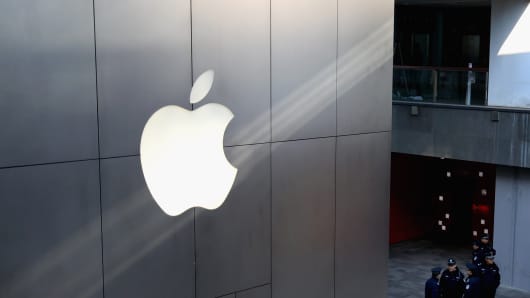Han Jiaojiao's breath forms a white cloud over her head as she inspects the smartphones under the glass counter. But the young insurance agent is not troubled by the lack of heating in the handset shop in Gaoliying, a rural town just outside Beijing, on this freezing night.
She decides to ignore the international brands in favor of a sleek white smartphone from Gionee, a Chinese group.
Millions of Chinese consumers are doing the same. They are opting for local brands over international counterparts, robbing Samsung, Apple and other global names of their dominance just as Chinese smartphone sales are soaring and the country is set to surpass the US as the world's largest smartphone market.
According to Strategy Analytics, 23.9 million smartphones were shipped in China in the third quarter last year, putting the country ahead of the US – with 23.3 million units – for the first time. In the third quarter of this year 38.5 million smartphones were shipped in China, versus 26.7 million in the US.
(Read More: The Smartphone Market Belongs to China in 2012: Report)
"Chinese brands have taken more than half the Chinese smartphone market this year, and they will take much more," says Sandy Shen, head of consumer research at Gartner, the research group, in Shanghai.
Although smartphones now account for about half of handset shipments for the Chinese market, less than 30 percent of all models in use are smartphones. "The people who can afford high-end smartphones, the segment foreign brands are focused on, have all bought one and now the market is mainly driven by demand for medium to low-end smartphones," says Ms Shen.
(Read More: Samsung Trounces Apple in Smartphone Sales)
That demand comes from people like Ms Han – people from smaller towns or the countryside who look for smartphones costing Rmb1,500 ($240) or less.
This changing consumer behavior shows.
Lenovo, the world's second-largest PC vendor, saw its share of China's smartphone market by unit sales jump from just 1.7 percent in the third quarter of 2011, to 14.8 percent in the September quarter this year – surpassing Apple and breathing down Samsung's neck.
Gartner estimates that Lenovo will take the number one spot next year. Gionee expanded its smartphone market share from just 1.5 percent in the first quarter of 2012 to 4.7 percent in the third quarter, surpassing HTC, the Taiwanese group that has struggled globally to compete with Samsung and Apple but did well in China.
Samsung Electronics has already been under pressure in China as its semiconductor business was hit last year by weak PC demand. While revenue from the company's external customers – those outside Samsung Electronics – in every other region increased from the previous year, in China it fell 5 percent to Won23.1 trillion ($21.3 billion).
Samsung's share of the Chinese smartphone market declined to 16.7 percent in the third quarter of this year, from 24.3 percent in the last three months of last year, according to Gartner.
(Read More: Why Samsung Stock Surge Won't Fizzle Out Like Apple's)
Mark Newman, an analyst at Sanford C Bernstein who used to work for Samsung, says a smaller market share at the low end in China need not be a devastating blow for Samsung given its strength in the higher-end. But Lee Jae-hyuk, an analyst at Daiwa Securities in Seoul, says Samsung's market share in China has further to fall.
"Samsung cannot compete effectively in the country's low-end market because its lowest-priced smartphones are still above $100," he says. Chinese companies are now offering smartphones for as little as Rmb400.
Analysts say this could become a problem for Samsung's profitability if consumers in other emerging markets start to favor lower-priced smartphones. Apple faces a bigger dilemma in China given its total lack of low-end models. The US company's Chinese smartphone market share fell from 12.3 percent in the second quarter of this year to 7 percent in the third quarter, according to Gartner.
So far, ZTE, Huawei, Coolpad and Lenovo are the local brands with the largest unit shipments. While Huawei, ZTE and Coolpad rely mostly on subsidized operator sales, Lenovo is in the best position to expand, analysts say. "Its product portfolio is well balanced throughout the high-, medium and low-end segments, its brand is very strong and it has far-reaching nationwide distribution channels, partly helped by its PC business," says Ms Shen.
But a whole breed of other, smaller brands such as Gionee is growing fast, helped by MediaTek, a Taiwanese low-cost chipmaker. "Local guys, they are moving up their price segment very quickly by using MediaTek's solutions," says one Taipei-based analyst. "The easy time is over, and the next six months are more challenging."
Additional reporting by Song Jung-a in Seoul


